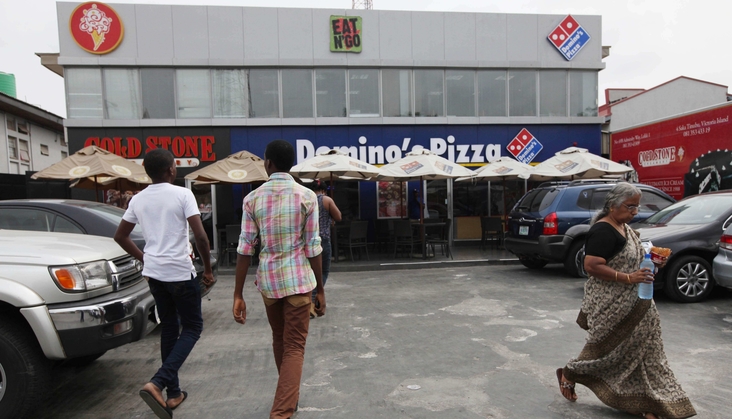Some years back, the African Development Bank (AfDB) kicked off a brutal debate over Africa’s middle classes – which it worked out were some 300 million strong, a figure later bumped up to 500 million. Ben Leo, the chief executive of Fraym, a data consultancy specialising in Africa, says there were significant issues with methodologies. In particular, the monetary-based approach is vulnerable to seasonal fluctuations so that a farmer may seem poor at one end of the year and rich at the other.
He says there were also problems with the way the AfDB tried to compare countries using power purchasing parity – a statistical tool for standardising incomes. A final topic of debate is that the AfDB has a very generous definition of middle class: households earning between $2-$4 a day.
“We took a very different approach,” says Leo. “It’s one that has worked in India to segment consumers, and we adapted it to the African context.”
Fraym focuses on assets – cars, phones, fridges – purchased by households, alongside education levels, to build up a picture of the consumer class using the ABC approach: “So an A and B consumer is a premium consumer, and a C might use premium products but less frequently,” says Leo.
Fraym builds a consumer grid
There has been a great deal of scepticism around data gathering on the continent. Fraym tries to get around the problem of poorly assembled country-level data sets by getting access to “the raw microlevel data that underpins these national statistics”. And, Leo says, “the particularly transformative thing has been that almost all of this data has geo-coordinates attached to it.”
That allows Fraym to layer this household data with satellite imagery and machine learning to create a very localised map of the continent, a one-by-one kilometre grid showing precisely how many and what sort of consumers are located in each square. “I think some people haven’t caught up with how much the data revolution is already a reality,” says Leo.
Fraym was born from frustration, says Leo, a former Africa adviser to the George W. Bush administration. In his 20 years working on the continent, he found it was impossible to locate local data sets to match any intuitive leaps you might want to make, “be it for a public policy decision, investment decisions or something else”. He was working at Kupanda Capital at the time. Fraym was built as an internal solution for Kupanda Capital, which became a co-founder in the business.
The data itself throws up some interesting nuggets. Kumasi in Ghana, for example, has a shade more consumers than the capital, Accra – the heritage of an old trading network, say old hands. And 10 of Africa’s top 50 consuming cities are in Nigeria.
But it also has structuring facts about the continent’s consumers: “95% of African consumers, or at least the ABC1 category that we are following, are in about 20 countries,” says Leo, estimating that this covers some 330 million people. And 219 million of those are in just five countries – Egypt, Nigeria, South Africa, Morocco and Algeria.
Stores need shoppers, stores need data
The data is used, for example, by soft drink and beverage companies who are looking to optimise their distribution networks, and by companies that want to expand with precision. “We want to avoid the mistakes made in the past,” says Leo, pointing to the now infamous comment by a Nestlé executive in 2015 who said that the Switzerland-based conglomerate had “overestimated” Africa’s middle class, causing it to cut 15% of its workforce on the continent. One Fraym analysis of consumers in Nairobi suggests that the current woes of the retailer Nakumatt were not only due to the mismanagement of finances but also an expansion strategy that placed stores in areas where there weren’t enough shoppers to support them.
“One concrete example is a school, with roots in Lagos, which does both day school and boarding school in primary and secondary education”, says Leo. “They know their business, but they don’t know what the demand is like a few hours up the road in Ibadan. There is tremendous demand for these services in places outside of Lagos, be it in Kaduna or Maiduguri or Port Harcourt. And that is a common trend we encounter across consumer-facing companies, whether they are packaged goods, beverages, education, health and media.”
Using a city by city approach, rather than staying at a national level, allows companies to tailor their approach, says Leo. “So you could have a Lagos-Ibadan strategy, or some of the urban areas in the smaller cities as a distinct entity to track and execute against.”
While there are many multinationals that currently use the company’s data tools, Fraym is trying to create products that are accessible to African companies. “So while we may not do a super-comprehensive custom body of work for a mid-sized Ghanaian firm, for example, we will still give them access to the data and some of the insights that a multinational would be able to buy,” adds Leo.
At the company level in Africa, there is still far too little data and reporting. Not enough companies publish accounts, making it hard for potential market entrants. Fraym hopes to help private-equity companies – who are among its clients – to size up potential markets correctly and to stress-test business ideas. “It’s a contribution to the de-risking of the continent,” says Leo.

